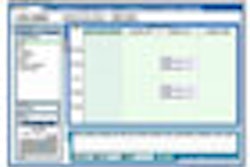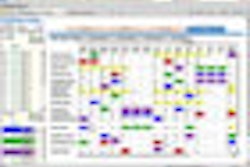One benefit of the Internet is its fingertip access to an infinite amount of information. But the availability of incalculable amounts of data also may also be the Internet's greatest disadvantage, no less for radiologists looking for specific results in their Web searches and not volumes of irrelevant files.
To help reduce the massive clutter that can hinder the discovery of radiology-specific and peer-reviewed content, Dr. Roland Talanow, a radiology resident at the Cleveland Clinic in Ohio, has developed Radiology Search.
The free search engine is designed to eliminate nonradiology information and increase the specificity for targeted files. Talanow said the validity and reliability of Radiology Search are high because the technology only searches peer-reviewed information.
The catalyst for the Web site was the need to explore multiple search engines, such as PubMed and Google, to find whatever information a radiologist needed. "I came up with the idea to integrate a search engine, which basically covers everything radiologists may need in their daily work," Talanow said.
Beginning a year ago, Talanow incorporated several specific search engines -- such as PubMed Reader, which can be used for dedicated PubMed research -- with his own previously developed programs into one dedicated Web site for radiologists.
Radiology Search works similarly to other search engine, such as Yahoo and Google. A radiologist types in a word or phrase and the results are displayed. The difference, Talanow said, is the heightened specificity of the results and the absence of unrelated, unwanted suggested sites.
"All in one view, there will be choices for images, teaching files, or publications," he added. "I also subdivided the searches if, for example, you are looking specifically for radiology journals or peer-review journals."
There is an online tutorial for the site, which "shows step-by-step how to use it and what the features are," Talanow said.
Radiology Search also offers additional features that can connect a radiologist to related societies and provide a menu for radiology journals. Customized options also allow a radiologist to search from his or her own Web site through a source code, which is adjusted to one's preferences through the home intranet site. "You don't have to open a new window and you don't have to go on Radiology Search to conduct the search," he explained.
Radiologist also can use the Web site to search for CME workshops, seminars, and other educational and accredited venues.
Talanow launched the Web-based search engine at the 2007 RSNA meeting in Chicago. Since then, the number of visitors to the site continues to increase, averaging approximately 70 "hits" per day, as of mid-December.
As for the future, he would like to implement the search engine on the Web sites of radiological societies, such as RSNA, the American Roentgen Ray Society (ARRS), and the European Congress of Radiology (ECR). Talanow plans to look into the possibility of expanding access to and the exposure of Radiology Search through those organizations early this year.
By Wayne Forrest
AuntMinnie.com staff writer
January 4, 2008
Related Reading
Pilot study: Entropy-driven CAD zips through vast breast image database, August 2, 2006
Copyright © 2008 AuntMinnie.com



















